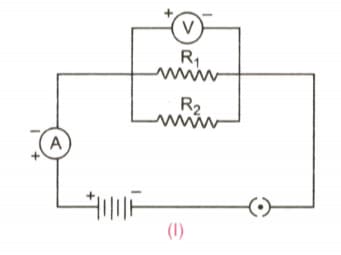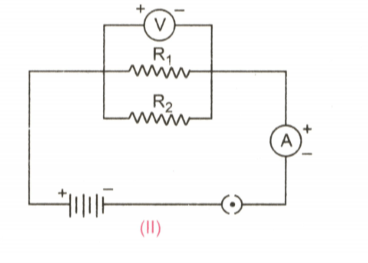Narendra Kumar Solutions for Chapter: Electricity, Exercise 12: PRACTICAL SKILLS BASED QUESTIONS
Narendra Kumar Physics Solutions for Exercise - Narendra Kumar Solutions for Chapter: Electricity, Exercise 12: PRACTICAL SKILLS BASED QUESTIONS
Attempt the free practice questions on Chapter 1: Electricity, Exercise 12: PRACTICAL SKILLS BASED QUESTIONS with hints and solutions to strengthen your understanding. Science Part-I NEW ERA PHYSICS Textbook for Class X solutions are prepared by Experienced Embibe Experts.
Questions from Narendra Kumar Solutions for Chapter: Electricity, Exercise 12: PRACTICAL SKILLS BASED QUESTIONS with Hints & Solutions
In the experiment on finding the equivalent resistance of two resistors, connected in parallel, three students connected the voltmeter in their circuits, in the three ways, and shown here:

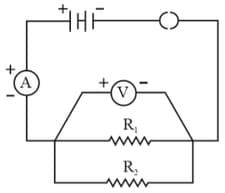
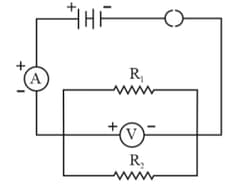
In which circuit the voltmeter has been correctly connected?
For carrying out the experiment, on finding the equivalent resistance of two resistances connected in parallel, a student sets up the circuit as shown. What are the faults in his circuit?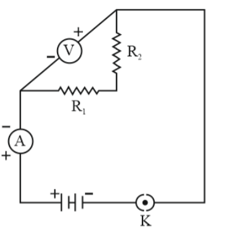
The following apparatus is available in the laboratory:
Battery: adjustable from to
Resistance: and
Ammeters: of range to and least count . of range to and least count .
Voltmeters: of range to and least count . of range to and least count .
What will be the best choice for the experiment to find the equivalent resistance of a parallel combination of two given resistors?
What is the reading of voltmeter and ammeter in the circuit given below?
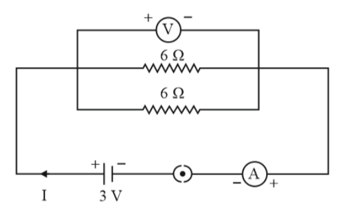
An ammeter can measure current up to . There are equal divisions between and marks on its scale. During an experiment to determine the equivalent resistance of the two resistors joined in parallel a student observes ammeter's pointer at rd graduation mark after zero when the key is off and the pointer is at graduation mark after when the key is inserted into the plug. The correct value of the current flowing in the circuit is.
Two resistors and are to be connected in parallel combination. Which is the correct combination (s)?
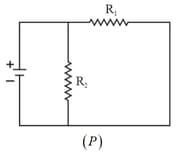
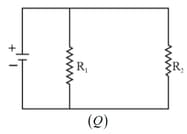
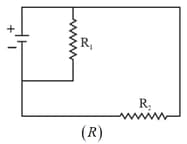
Which of the circuit components in the following circuit diagram are connected in parallel?
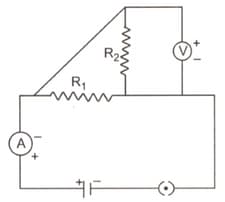
To find the equivalent resistance of two resistors connected in parallel, two students connected the ammeter in two different ways as given in the two circuits (I) and (II). In which circuit the ammeter has been correctly connected?
